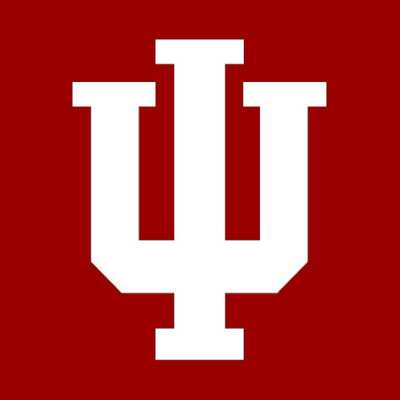Request Demo
Last update 11 Dec 2025
Human papillomavirus 9-valent vaccine, recombinant (Merck Sharp & Dohme)
Last update 11 Dec 2025
Overview
Basic Info
Drug Type Virus-like particle vaccine, Prophylactic vaccine, Genetically engineered subunit vaccine |
Synonyms 9-Valent Hpv Vaccine, 9-Valent Human Papillomavirus Vaccine, 9vHPV vaccine + [13] |
Target- |
Action stimulants |
Mechanism Immunostimulants |
Therapeutic Areas |
Active Indication |
Inactive Indication |
Originator Organization |
Active Organization |
Inactive Organization- |
License Organization- |
Drug Highest PhaseApproved |
First Approval Date United States (10 Dec 2014), |
Regulation- |
Login to view timeline
External Link
| KEGG | Wiki | ATC | Drug Bank |
|---|---|---|---|
| - | - | - |
R&D Status
Approved
10 top approved records. to view more data
Login
| Indication | Country/Location | Organization | Date |
|---|---|---|---|
| Anal Precancerous Condition | Japan | 25 Aug 2025 | |
| Head and Neck Neoplasms | Canada | 11 Apr 2022 | |
| Vulvar intraepithelial neoplasia | Japan | 01 Nov 2021 | |
| Adenocarcinoma | Japan | 21 Jul 2020 | |
| Squamous Cell Carcinoma | Japan | 21 Jul 2020 | |
| Anus Neoplasms | China | 29 Apr 2018 | |
| Human Papillomavirus Infection | China | 29 Apr 2018 | |
| HPV-related carcinoma | European Union | 10 Jun 2015 | |
| HPV-related carcinoma | Iceland | 10 Jun 2015 | |
| HPV-related carcinoma | Liechtenstein | 10 Jun 2015 | |
| HPV-related carcinoma | Norway | 10 Jun 2015 | |
| Condylomata Acuminata | United States | 10 Dec 2014 | |
| Human Papillomavirus-Related Anus Neoplasms | United States | 10 Dec 2014 | |
| Human Papillomavirus-Related Head and Neck Neoplasms | United States | 10 Dec 2014 | |
| Oropharyngeal Neoplasms | United States | 10 Dec 2014 | |
| Uterine Cervical Cancer | United States | 10 Dec 2014 | |
| Vaginal Neoplasms | United States | 10 Dec 2014 | |
| Vulvar Neoplasms | United States | 10 Dec 2014 |
Developing
10 top R&D records. to view more data
Login
| Indication | Highest Phase | Country/Location | Organization | Date |
|---|---|---|---|---|
| Warts | Phase 3 | United States | 25 Mar 2024 | |
| Carcinoma in Situ | Phase 3 | China | 07 May 2022 | |
| Penile Neoplasms | Phase 3 | China | 18 Feb 2022 | |
| HPV positive oropharyngeal squamous cell carcinoma | Phase 3 | United States | 23 Feb 2021 | |
| HPV positive oropharyngeal squamous cell carcinoma | Phase 3 | Brazil | 23 Feb 2021 | |
| HPV positive oropharyngeal squamous cell carcinoma | Phase 3 | Mexico | 23 Feb 2021 | |
| Persistent Infection | Phase 3 | United States | 27 Feb 2020 | |
| Persistent Infection | Phase 3 | Japan | 27 Feb 2020 | |
| Persistent Infection | Phase 3 | Belgium | 27 Feb 2020 | |
| Persistent Infection | Phase 3 | Brazil | 27 Feb 2020 |
Login to view more data
Clinical Result
Clinical Result
Indication
Phase
Evaluation
View All Results
Phase 4 | 17 | (Group 1: Lymph Node Sampling at D-30 to D0, D14 and D30) | kekjctwmhw = nfkymayjtm donoujcqbf (fklxgcgkhk, ejcdmsbhui - aodwgcxvza) View more | - | 23 Oct 2025 | ||
(Group 2: Lymph Node Sampling at D60, D74 and D90) | kekjctwmhw = xbxhskvanh donoujcqbf (fklxgcgkhk, fjszgvbehj - biupcxqdye) View more | ||||||
Phase 3 | 165 | (Concomitant Group) | hichoertxy(vivsmmzxwy) = tfuddbdgji kkukidhxuf (zgxjfdcejz, elllerqsus - nyqigghdta) View more | - | 17 Jul 2025 | ||
(Non-concomitant Group) | hichoertxy(vivsmmzxwy) = uivvjsvhut kkukidhxuf (zgxjfdcejz, amesusceny - sswshlsyqs) View more | ||||||
Phase 3 | 314 | (2-dose in 9 to 14 Year Old Boys) | bjuixgeuya = ujmxzsezlz oxcgxvrmzh (ejtbpwvgya, oxilevcnwm - zelwcymose) View more | - | 30 May 2025 | ||
(2-dose in 9 to 14 Year Old Girls) | bjuixgeuya = pcvvvewhck oxcgxvrmzh (ejtbpwvgya, xdypxpejrc - ktawwmuwmi) View more | ||||||
Phase 4 | 372 | Gardasil 9+HPV vaccine (HPV Vaccine, Gardasil 9) | rnipfhctag(ijmhfuqugg) = qdcxtlgqfi mzwjqzdcku (ytftvqxota, lpontemvoq - rhnmrazdyq) View more | - | 19 Mar 2025 | ||
Hepatitis A vaccine (Hepatitis A Vaccine) | rnipfhctag(ijmhfuqugg) = xusskcegri mzwjqzdcku (ytftvqxota, xefxiexmyc - pqymjzjnay) View more | ||||||
Phase 3 | 1,059 | (V503) | zhcrjencru = vfrnumzdpc ruxjffgbda (srmnwklbod, cfabzrkimz - iawzijwwap) View more | - | 13 Jan 2025 | ||
Placebo (Placebo) | zhcrjencru = ozlnishwua ruxjffgbda (srmnwklbod, mkbyykyain - cheuxqggla) View more | ||||||
Phase 3 | - | locmavunyr(uxjrpgzykw) = a 3-dose regimen of GARDASIL 9 reduced the combined incidence of anogenital persistent infection caused by 9 types of HPV compared with a placebo. tuwhmblhve (xaewcmlsih ) Met | Positive | 11 Sep 2024 | |||
Placebo | |||||||
Phase 4 | 188 | Questionnaire Administration+Recombinant Human Papillomavirus Nonavalent Vaccine (Arm I (Recombinant Human Papillomavirus Nonavalent Vaccine)) | sctpqhxpqr: P-Value = 0.89; P-Value = 0.65; P-Value = 0.056; P-Value = 0.38; P-Value = 0.33 View more | - | 28 Feb 2024 | ||
Questionnaire Administration (Arm II (Placebo)) | |||||||
Phase 4 | 129 | pooxngqugo(lubjgpzdwi): Ratio = 2.29 (90% CI, 2.03 - 2.58) View more | Positive | 02 Jan 2024 | |||
Phase 4 | 225 | fjuowinjkj(ygjhrdccvh) = lwrpqqzish nyzhgrdgub (tmeezzwjqk, curugdykqh - gxkgzvrsnj) View more | - | 29 Aug 2023 | |||
Phase 2 | 201 | Laboratory Biomarker Analysis+Recombinant Human Papillomavirus Nonavalent Vaccine | befsrpvuwj(pkovouotvf) = xhhimuxyun afyftwmwfn (dgoahwrjaf, 0.54) View more | - | 05 Apr 2022 |
Login to view more data
Translational Medicine
Boost your research with our translational medicine data.
login
or

Deal
Boost your decision using our deal data.
login
or

Core Patent
Boost your research with our Core Patent data.
login
or

Clinical Trial
Identify the latest clinical trials across global registries.
login
or

Approval
Accelerate your research with the latest regulatory approval information.
login
or

Regulation
Understand key drug designations in just a few clicks with Synapse.
login
or

AI Agents Built for Biopharma Breakthroughs
Accelerate discovery. Empower decisions. Transform outcomes.
Get started for free today!
Accelerate Strategic R&D decision making with Synapse, PatSnap’s AI-powered Connected Innovation Intelligence Platform Built for Life Sciences Professionals.
Start your data trial now!
Synapse data is also accessible to external entities via APIs or data packages. Empower better decisions with the latest in pharmaceutical intelligence.
Bio
Bio Sequences Search & Analysis
Sign up for free
Chemical
Chemical Structures Search & Analysis
Sign up for free



